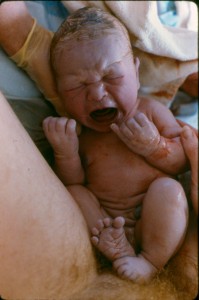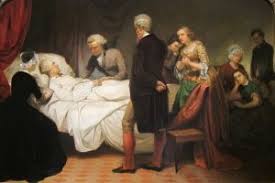AMA’s 1908 scheme to falsify the source of the information used to compile the infamous 1910 “Flexner Report”
 Editor’s Note & Prologue:
Editor’s Note & Prologue:
It unusual to begin a topic with links to references and supporting documents, but this a very special case.
The general public doesn’t know much about the AMA or think about “organized medicine” very often. People certain aren’t aware that the single biggest reason that our “healthcare” system is both dysfunction and unproductively expensive goes straight back to a medical monopoly slowly created by the AMA over the last 150 years.
Having achieved that nefarious goal, they set out to make sure that Americans would NEVER have a more cost-efficient national health care system like those enjoyed by the vast majority of other wealthy developed countries.
Since the AMA created its Scope of Practice Partnership (SOPP) in 2006 its newest target, and that of its 105 member organizations, is to exploit, control and extinguish the independent practice of professional non-MD practitioners and make it illegal to get reimbursed by third parties. In 2020, the AMA’s published its “Victory” letter, bragging that it got new laws passed in 22 states that make the independent practice of 10 different professional categories of non-MD practitioners illegal .
According to its website, political lobbying by the AMA’s SOOP in 2019 & 2020 got legislation passed in 22 states that barred the independent practice of:
Naturopaths, nurse-midwives, nurse-practitioners, nurse-anesthetists, optometrists, pharmacists, physical therapists, podiatrists, physician-assistants, and psychologists
In the states of:
Alabama, Arizona, Arkansas, California, Colorado, Connecticut, Florida, Hawaii, Illinois, Indiana, Iowa, Louisiana, Maine, Maryland, Mississippi, Montana, Nebraska, Nevada, Oregon, Ohio, Tennessee, and Vermont.
 This legislation also makes it illegal for these professional practitioners to be directly compensated for their services. Under theses new laws, previously self-employed healthcare professionals (the majority of whom are women, often with families to support) either have to find a new profession or get an MD to hire them in order to do the job they have been educated and clinically trained to do. When they work in a doctor’s office, their MD-employer gets to bill insurance companies and Medicare-Medicaid program at MD prices for care provided their employee-practitioners.
This legislation also makes it illegal for these professional practitioners to be directly compensated for their services. Under theses new laws, previously self-employed healthcare professionals (the majority of whom are women, often with families to support) either have to find a new profession or get an MD to hire them in order to do the job they have been educated and clinically trained to do. When they work in a doctor’s office, their MD-employer gets to bill insurance companies and Medicare-Medicaid program at MD prices for care provided their employee-practitioners.
An official “Memorandum” by the California Medical Board described this practice as:
…. the hiring of additional allied health care professionals has not really done anything to benefit patients.
…. the manner in which they are being hired and used now, they are really only serving to increase the income of physicians.
Although physicians are hiring more Physician Assistants and Nurse Practitioners, and often patients never see the physician, the patients are charged the same amount for an office visit.
This is income for the physician, but there is no cost saving to the patient.”
Members, Division of Licensing Date: October 19, 1993
Medical Board of California — Robert del Junco, M.D. Chair [former president of the MBC]
Subject: Status Report: HEALTH POLICY AND RESOURCES TASK FORCE
Link to the AMA’s 2020 online “Victory” letter
For that reason, I am providing links to these references up-front. That makes it easy to read them before, during or after reading the rest of this post.
Here is the link to the original document used in this post, which came from the AMA’s own website:
AMA_Flexner_lttr-coverup_OloladeOlakanmi_1910.
There are also linked references that provide additional support for the assertions by myself and many people that the politics of the AMA is the root and branch of our dysfunction, unproductively expensive healthcare/medical services delivery system. For far too many Americans, what is suppose to be supportive and therapeutic system turned out to be source of needless suffering, unnecessary disabilities and preventable death.
Our inefficient, ineffective, unproductively expensive medical care disadvantages the US economy and reduces our ability to compete globally
 The much higher and ever escalating cost of our systematically broken model of healthcare puts the US at a great disadvantages in the global marketplace. Just one brief example came from Toyota in 2009, acknowledging that employee health care expenses adds the company $700 of the selling price of every car that rolls of their assembly lines. I’m sure it’s much high in 2021.
The much higher and ever escalating cost of our systematically broken model of healthcare puts the US at a great disadvantages in the global marketplace. Just one brief example came from Toyota in 2009, acknowledging that employee health care expenses adds the company $700 of the selling price of every car that rolls of their assembly lines. I’m sure it’s much high in 2021.
Other links
1. The Amazing Logistics of Flexner’s Fieldwork by Mark D. Hiatt, MD, MBA (AAPS).
This is a contemporary article researched and written by an MD. It exposed the literal impossibility of Abraham Flexner to travel by train and stagecoach to make one or two-day visits to evaluate all 167 medical school campuses in the entirety of North American (US including Rocky Mountain states and Canada) in 8 months as claimed. According to Dr. Hiatt’s extensive research, this was physically impossible. Flexner and the Carnegie Foundation Apparently relied heavily on information supplied by the AMA’s Council on Education to draw up the list of medical schools that would be forced to close by the AMA.
2. Excerpts from the original (and very long!) report by the Carnegie Foundation‘ historically known as “The Flexner Report”
The Debate on Health Care Policy Reform ~ an exercise in pseudo-journalism; faith gibson, LM 2009
Everything you ever wanted to know about healthcare and organized medicine but were afraid to ask
Merchants of Medicine, 1940 by Dr. Emanuel Josephson, MD
END of Prologue

The American Medical Association, Nation Medical Association, Carnegie Foundation, 1910 Flexner Report and institualized exploitation of doctors and patients alike by organized medicine
This AMA document was originally prepared in the 1980s by Dr. Ololade Olakanmi, a black member of the AMA & the Writing Group on the History of African Americans and the Medical Profession.
The information came from AMA historical records that documented the different schemes the Association used to close medical schools that taught anything other than the allopathic medical model (drugs, surgery and radiation), as well as nearly all the medical schools that accepted non-white male students, immigrants, women as students.
The most astonishing document uncovered by Dr. Olakanmi was the Minutes of a meeting held in 1908 between representatives of the AMA’s Council on Education, president of the Carnegie Foundation and its record a scheme by the AMA collude with the as an institution that was highly-respected and seen by the public as “neutral third party” to publish the AMA’s Educational Council reports gathered from the Council’s site visits to medical schools in 1904-1905, by getting him to claim that and subsequently used by the AMA to drive more than half of American medical schools to close had really been done by Carnegie Foundation employee Abraham Flexner of coming from a
This included the transcript of a meeting held in December of 1908 between members of the AMA’s ‘Council on Medical Education’ and President Pritchett of the Carnegie Foundation, Foundation employ Abraham Flexner. As quoted below, the meeting was to arrange a scheme in which work done by the AMA’s educational Council in 1904-1905 would be passed off as coming from a highly-respected and neutral “third party”, in this case, the Carnegie Foundation.
 Here is a small samples of comment that provide photographic evidence of the AMA with “the smoking gun” still in its hand.
Here is a small samples of comment that provide photographic evidence of the AMA with “the smoking gun” still in its hand.
At the Annual Congress on Medical Education, Medical Licensure and Hospitals (Chicago, February 6, 1928), Dr. Arthur Dean Bevan—who was chairman of the {AMA’s} Council {on Education} from 1904 to 1928—wrote the following in JAMA: [ref: Journal of the American Medical Association 90(15) (April 14, 1928): 1175.]
“As the work of the Council developed, it occurred to some of the members of the Council that, if we could obtain the publication and approval of our work by the Carnegie Foundation for the Advancement of Teaching, it would assist materially in securing the results we were attempting to bring about.
With this in mind we approached President Henry S. Pritchett of the Carnegie Foundation, presented to him the evidence we had accumulated and asked him to make it the subject of a special report on medical education to be published by the Carnegie Foundation. He enthusiastically agreed to this proposition.” (Bevan, Arthur Dean. Cooperation in Medical Education and Medical Service: Functions of the Medical Profession, of the University and of the Public.
Other excerpts of historic documents provided by Dr. Olakanmi:
“… the Council approached the Carnegie Foundation for the Advancement of Teaching to enlist its aid as a neutral party.”
The Council provided the Foundation with data that had been collected during the course of its {i.e. AMA’s Council on Education’s work in 1904 & 1905}, to provide a baseline and framework for the new report. However, the Council and the Carnegie Foundation agreed that it would be best if the Council wasnot directly recognized as spearheading the new report.
The Council and the Carnegie Foundation believed that the observations and recommendations in the report would be more widely accepted if they came “from a neutral educational foundation of high standing”
“He [President Prichett] agreed with the opinion previously expressed by the members of the Council that while the Foundation would be guided very largely by the Council’s investigation, to avoid the usual claims of partiality no more mention should be made in the report of the Council than any other source of information.
The report would therefore be, and have the weight of an independent report of a disinterested body, which would then be published far and wide. It would do much to develop public opinion.”
Dr. Martini summarized the situation this way:
“The Foundation responded enthusiastically and appointed Abraham Flexner, MA, to conduct a continuing investigation of the medical schools. Although the Foundation would be directed fundamentally by the Council’s previous investigations, it was decided that to guarantee the objectivity and partiality of the final report, the Council would be mentioned only as a source of information.” (Martini, Carlos J. M. An Estimable Legacy.
Implementation of the Flexner Report
Dr. Nathan P. Colwell—secretary of the Council from 1904 to 1931—accompanied Flexner on many, if not all, of the medical school site visits in preparation for The Flexner Report. According to historical documents at the American Medical Association:
“The Carnegie study [The Flexner Report] was begun in January, 1909, by Mr. Abraham Flexner for the Carnegie Foundation and Dr. N. P. Colwell of the Council. Their results were published in 1910 in what is commonly known as ‘The Flexner Report’.”
(A History of the Council on Medical Education and Hospitals of the American Medical Association, 1904-1959, pg. 10.; Johnson, Victor. A History of the Council on Medical Education and Hospitals of the American Medical Association, pg. 11. Reprinted from Fishbein, Morris. A History of the American Medical Association, 1847-1947. Philadelphia: W. B. Saunders Company, 1947.)
And:
“The Carnegie Foundation for the Advancement of Teaching was receptive to the overtures of the Council on Medical Education and beginning in 1909, a survey of all medical schools in the United States and Canada was conducted by Mr. Abraham Flexner of the Carnegie Foundation and Dr. N. P. Colwell of the Council.”
(Future Directions for Medical Education, A Report of The Council on Medical Education, Adopted June 15, 1982, by The House of Delegates of the American Medical Association, pg. 58-59.) The Council decided that The Flexner Report should be released before the Council released its 1910 publication of “satisfactory colleges,” to enhance the impact of the latter.
The minutes of the December 1908 Council meeting state that:
“It was considered wise to withhold publication of the list of satisfactory colleges until the Carnegie report [The Flexner Report] comes out…(so that)…that report would make the council’s report at a later date more effective.”
(Reprinted in A History of the Council on Medical Education and Hospitals of the American Medical Association, 1904-1959, pg. 10.; Reprinted in Johnson, Victor. A History of the Council on Medical Education and Hospitals of the American Medical Association, pg. 11. In Fishbein, Morris. A History of the American Medical Association, 1847-1947. Philadelphia: W. B. Saunders Company, 1947.)
Since the research for The Flexner Report and the list of “satisfactory colleges” were both gathered from 1909 to 1910 by the Council (JAMA 57(8) (1911): 659; JAMA 65(8) (1915): 717), and since Flexner and Colwell largely performed this research together, it is likely that the two reports were based on the same data.
The Amazing Logistics of Flexner’s Fieldwork by Mark D. Hiatt, MD, MBA
Association of American Physicians and Surgeons (AAPS) 2000 Dr. Hiatt is a resident in diagnostic radiology at the University of Virginia in Charlottesville, Virginia.
Dr. Hiatt begins with by quoting this excerpt from Jules Verne’s “Around the World in 80 Days“:
“Phileas Fogg had won his wager, and had made his journey around the world in eighty days. To do this he had employed every means of conveyance – steamers, railways, carriages, yachts, trading-vessels, sledges, elephants. The eccentric gentleman had throughout displayed all his marvelous qualities of coolness and exactitude.
But what then? What had he really gained by all this trouble? What had he brought back from this long and weary journey?

The disturbing story these documents all tell make me want to cry!
Index of URLs containing content used in this article
AMA_Flexner_lttr-coverup_OloladeOlakanmi_1910
The Amazing Logistics of Flexner’s Fieldwork by Mark D. Hiatt, MD, MBA (AAPS).
The Debate on Health Care Policy Reform ~ an exercise in pseudo-journalism; faith gibson, LM 2009 ~ Everything you ever wanted to know about healthcare & organized medicine but were afraid to ask
https://healthcare2point0.com/PseudoJournalism_1Colnm_Jun21_09.htm
AMA-doc_CME & Flexner1899-1910
AMA_Flexner_lttr-coverup_DrOloladeOlakanmi_1910 ***experimental slight change, probably breaks the link
RELEVANT AMA POLICY ~ Scope of Practice Partnership ~ HOD’s Resolutions
House of Delegate–160.949 – Practicing Medicine by Non-Physicians:
states that “[o]ur AMA:
(1) urges all people, including physicians and patients, to consider the consequences of any health care plan that places any patient care at risk by substitution of a non-physician in the diagnosis, treatment, education, direction and medical procedures where clear-cut documentation of assured quality has not been carried out, and where such alters the traditional pattern of practice in which the physician directs and supervises the care given;
(4) continues to encourage state medical societies to oppose state legislation allowing non-physician groups to engage in the practice of medicine without physician (MD, DO) training or appropriate physician (MD, DO) supervision; and
(5) through legislative and regulatory efforts, vigorously support and advocate for the requirement of appropriate physician supervision of non-physician clinical staff in all area of medicine. (Res. 317, I-94; Modified by Res. 501, A-97; Appended: Res. 321, I-98; Reaffirmation A-99; Appended: Res. 240, Reaffirmed: Res. 708 and Reaffirmation A-00; Reaffirmed: CME Rep. 1, I-00).”
H-35.973 Scopes of Practice of Physician Extenders
Our AMA supports the formulation of clearer definitions of the scope of practice of physician extenders to include direct appropriate physician supervision and recommended guidelines for physician supervision to ensure quality patient care. (Res. 213, A-02)
H-35.988 Independent Practice of Medicine by “Nurse Practitioners”
The AMA, in the public interest, opposes enactment of legislation to authorize the independent practice of medicine by any individual who has not completed the state’s requirements for licensure to engage in the practice of medicine and surgery in all of its branches. (Sub. Res. 53, I-82; Reaffirmed: A-84; Reaffirmed: CLRPD Rep. A, I-92; Reaffirmed: BOT Rep. 28, A-03)
H-35.993 Opposition to Direct Medicare Payments for Physician Extenders
Our AMA reaffirms its opposition to any legislation or program which would provide for Medicare payments directly to physician extenders, or payment for physician extender services not provided under the supervision and direction of a physician. (CMS Rep. N, I-77; Reaffirmed: CLRPD Rep. C, A-89; Reaffirmed: Sunset Report, A-00)
 The Beat goes on –> link to the AMA’s 2020 online “Victory” letter
The Beat goes on –> link to the AMA’s 2020 online “Victory” letter
AMA lobbying advise –> http://faithgibson.org/sopp-related-posts-on-ama-web-site/
